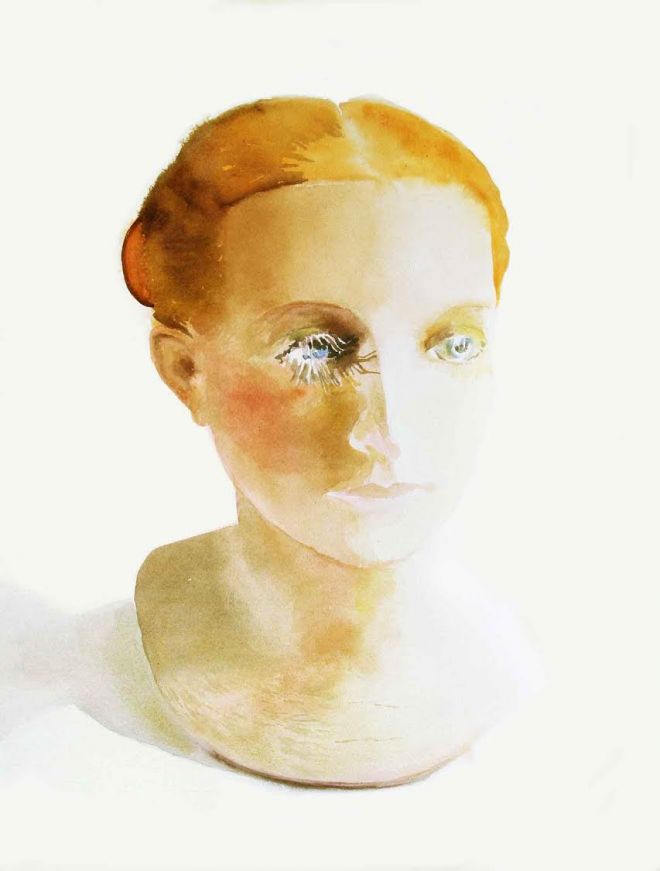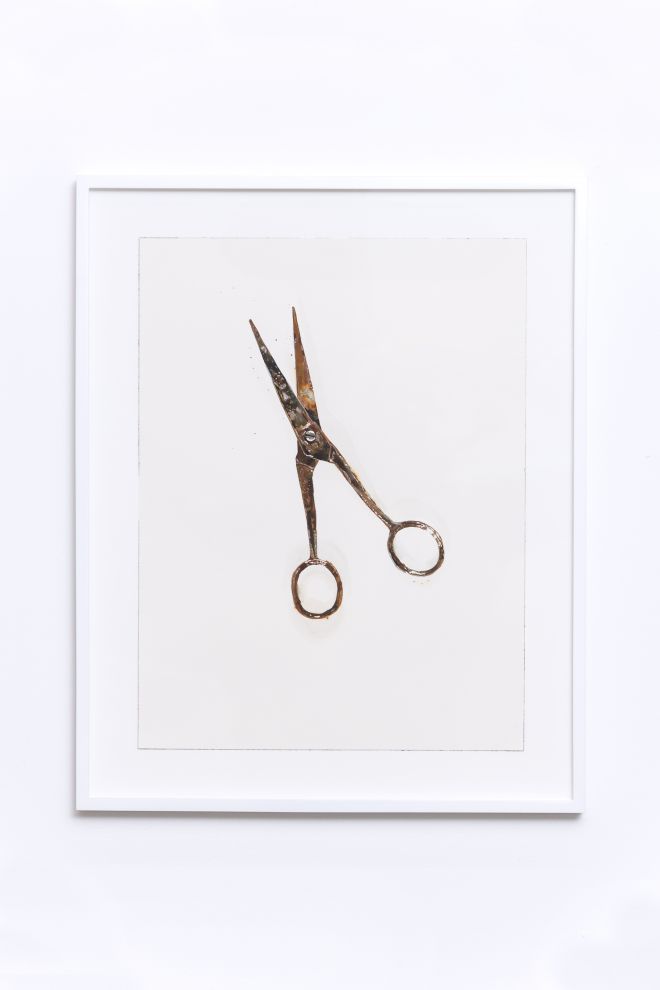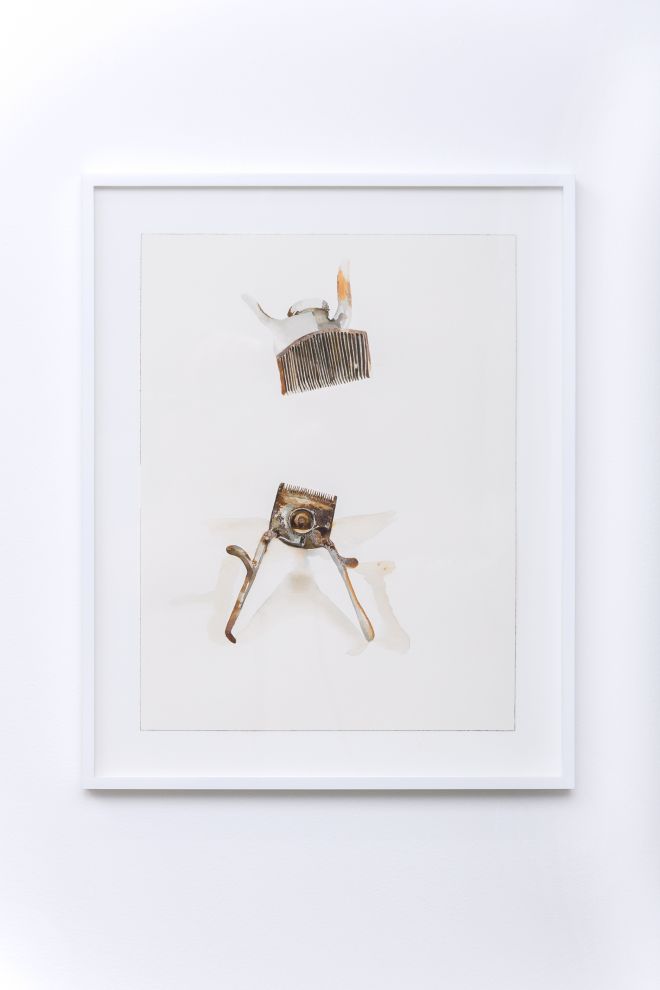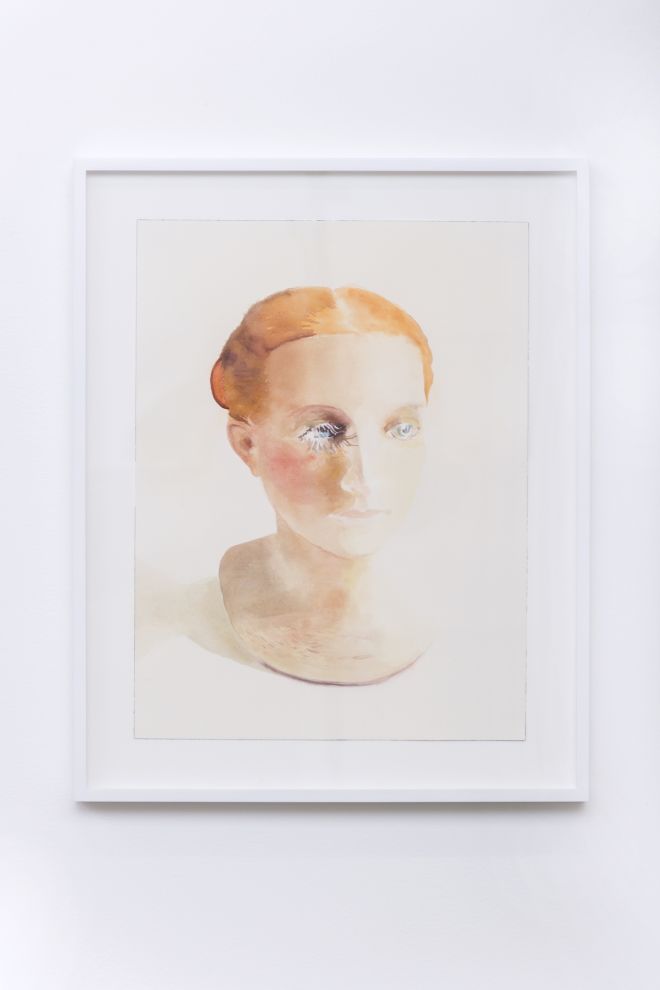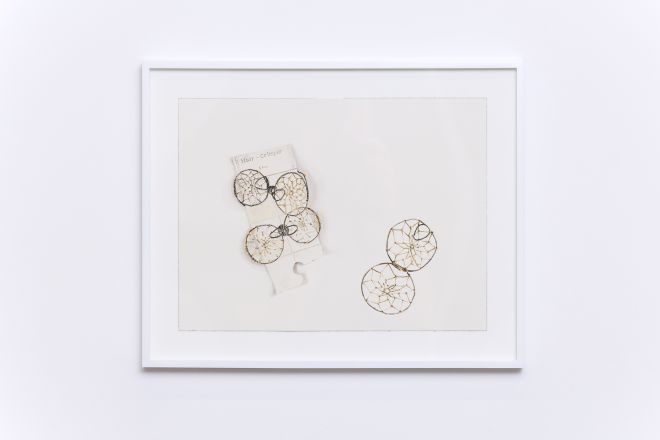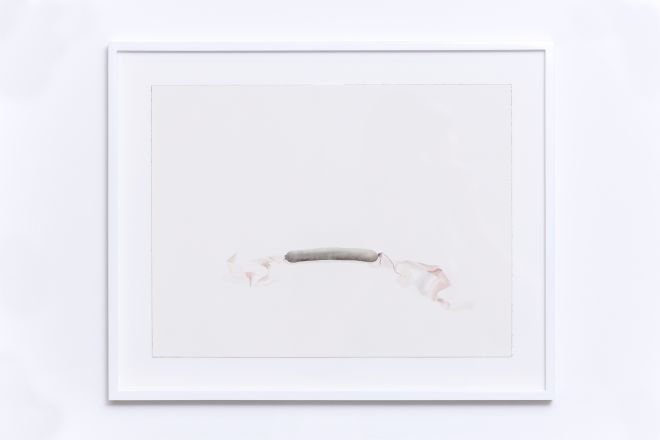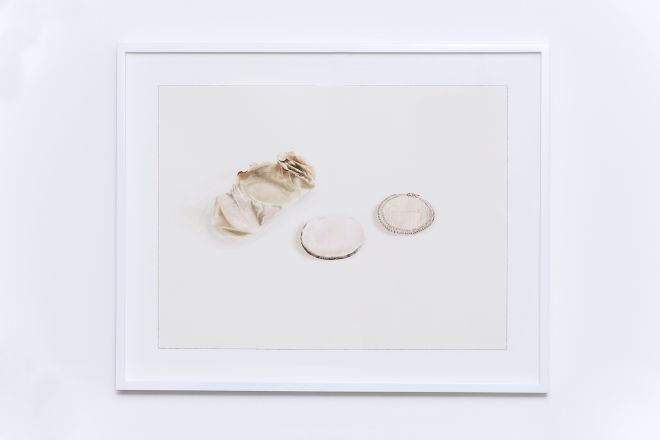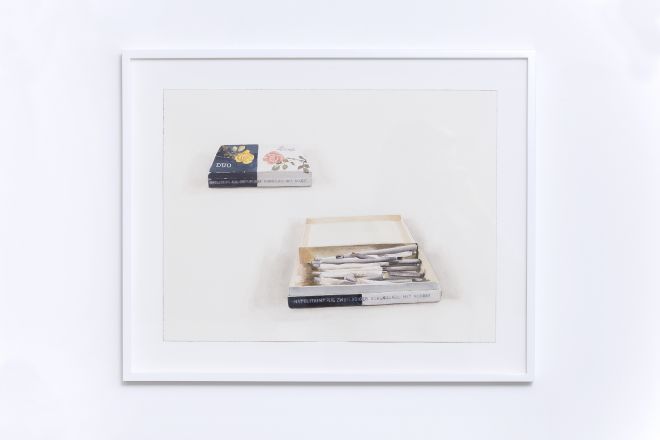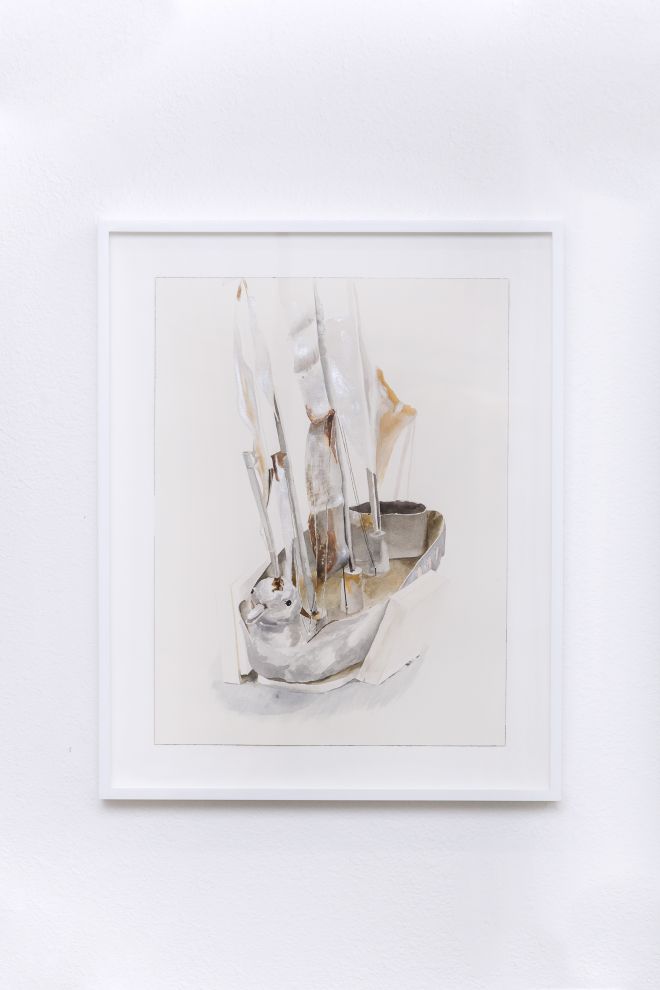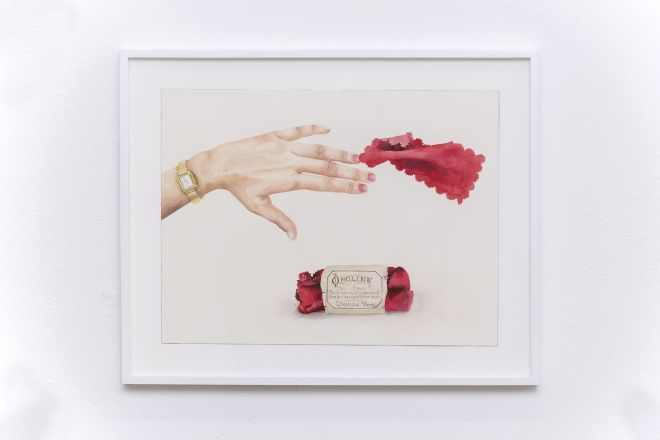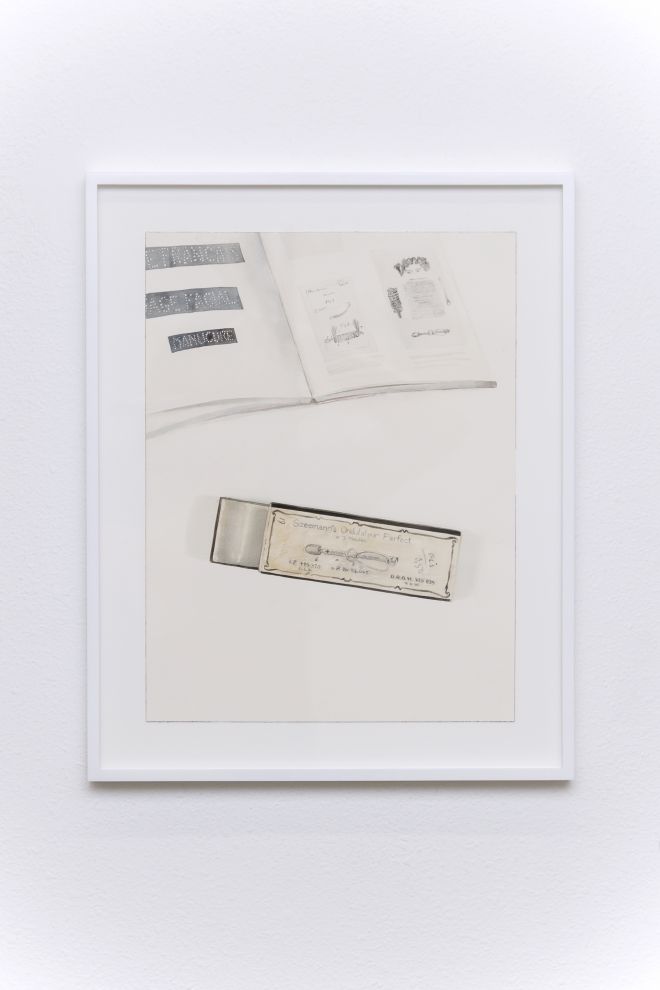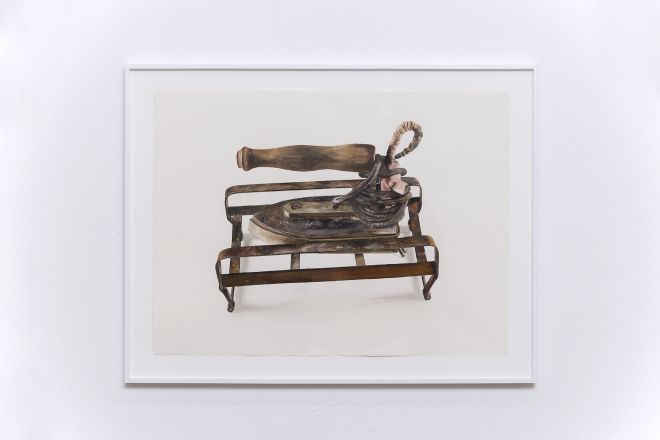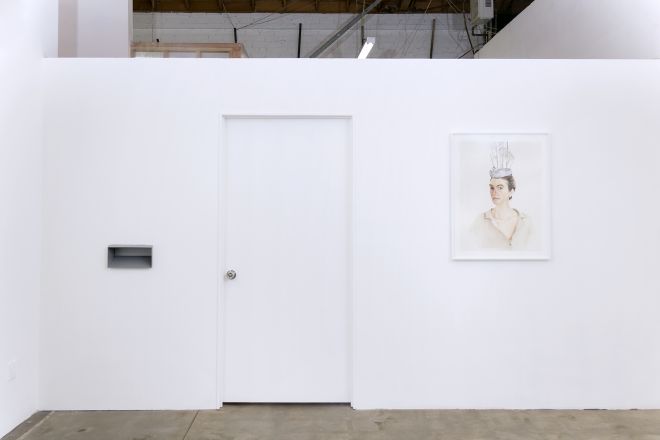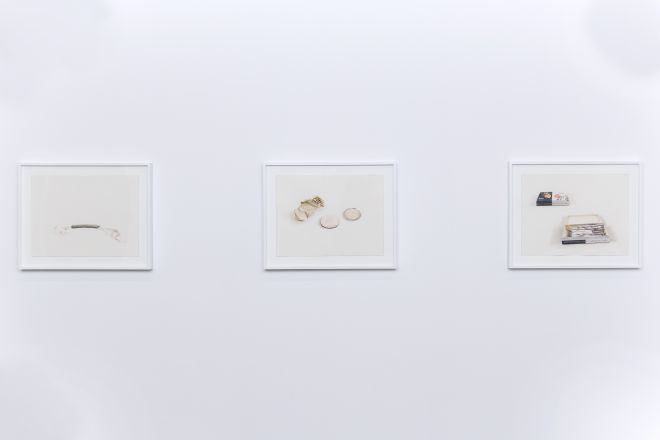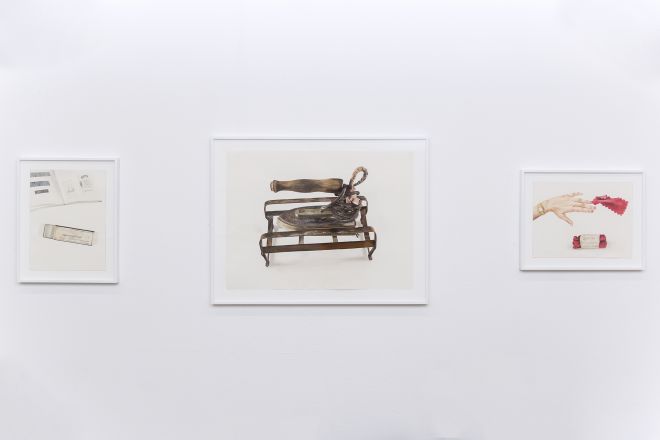Los Angeles Contemporary Archive is excited to present The Beautician, a new body of watercolor paintings on paper by Melissa Huddleston. Huddleston's paintings depict objects from the Harald Szeemann archive, housed at the Getty Research Institute, where she is employed in the conservation department. She has focused specifically on materials related to Grandfather: A Pioneer Like Us, an exhibition curated by Szeemann held in his former apartment in Bern, Switzerland in 1974.
Harald Szeemann (1933-2005) was the first professional curator. His roving and expansive approach to culture defined new contexts for art in the 20th century and introduced a wealth of new voices and approaches that continue to profoundly influence both contemporary art and curatorial practice. Landmark exhibitions that he curated include Live in Your Head: When Attitudes Become Form (1969), documenta 5 (1972), and multiple editions of the Venice Biennale (1980, 1999, 2001). Szeemann's obsessive practice as a gatherer of information is legendary for articulating a conception of the archive as a living, breathing thing, subject to permutation, extrapolation, and redefinition. His expansive office in Switzerland, a building known as “la fabbrica rosa” (The Pink Factory), was famously cluttered with an extravagant wealth of letters, books, gifts, artworks, memorabilia, files on about 25,000 artists, and all manner of ephemera from his long career. In 2011, his archive was acquired by the GRI. In a twist of fate, while Szeemann declared his work to be an alternative to the realm of the museum, his ideas and techniques have today been largely absorbed by museology and museum culture.
After documenta 5, a mega-exhibition with an expansive international roster of artists, Szeemann turned to a personal subject: the life of his recently deceased grandfather. He wryly referred to it as “the smallest exhibition in the world following the largest exhibition in the world.” Etienne Szeemann (1873-1971) was a Hungarian-born Swiss hairdresser and beautician credited with many stylistic innovations and technical inventions, including a patented hair curler. Grandfather: A Pioneer Like Us exhibited the inventions, tools, and personal effects from his estate, organized into thematic environments. With a complex mixture of irony and sincerity, Szeemann titled the section of the exhibition dedicated to such inventions “His Contribution to the Triumph of Beauty”. The exhibition was an homage to his grandfather, but also a self-reflexive examination of conventions of artistic value, the agency of the curator, the question of impartiality in curation, and the relationship of art to beauty.
Huddleston's paintings are the result of her own encounters with the material legacy of the Grandfather exhibition housed at the Getty, translating the physical relics of a bygone curatorial experiment into watercolors, one of the most traditional of art media. Her paintings are both observational documents of the Szeemann archive's physical contents, and imaginative dialogues between an academic, institutional history and a personal, living present. The literal subjects of the work are manifold: small blush compacts, 19th century hair styling tools, elaborate hair dressing sculptural pieces, hair curling rods, men's shaving tools, decorated commercial display boxes, scissors, a variety of clips, wigs, mannequin heads, and other such objects. Many of the materials are now yellowed, rusty, torn or dilapidated. Huddleston's approach to these beauty products is documentary in its realism, registering the precise colors and forms of the artifacts. At the same time, they are unmistakably handmade, in the artist's distinctive hand. Playing upon this difference, she depicts her own body within the work. In one image, she imagines a bright red swatch of leather once used for tinting fingernails being daubed onto her own nails, staining them. In a triumphal self-portrait, she depicts herself wearing a large headpiece in the shape of a ship, an extravagant confection of wood, cardboard, fabric, and silver paint crafted by the elder Szeemann, in the style of Louis XVI. (In the era of Marie Antoinette, such headpieces were popular on the occasion of major naval victories.) Mixing impartial realism and outright fantasy, Huddleston's project self-consciously interrogates the historical foundations of contemporary art's slippery understanding of the conceptual boundaries between art and artifact, the made and the found, and the personal and the professional.
On the event of The Beautician a mini symposium will be held April 24th on the legendary curator Harald Szeemann. Featuring Doris Chon, Glenn Phillips, Pietro Rigolo from the Getty Research Institute. More info here.
Images - Christian Alvarez

